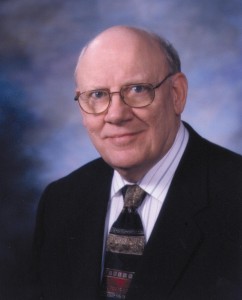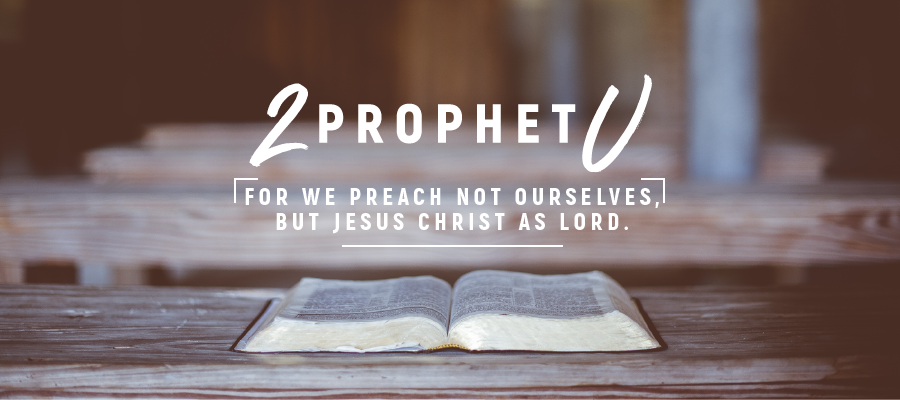My Favorite Cemetery (Part 2)
Retracing our steps and walking west, we pass Bunyan, then the graves of the Cromwells (not Oliver or Richard), and to the right discover the grave of Mrs. Susannah Wesley, mother of John and Charles—and seventeen others! In spite of her busy life, she spent at least one hour each morning and evening in prayer and meditation. She personally taught and prayed with her children. For a fascinating study of the Wesley family, read Family Circle by Maldwyn Edwards (London: The Epworth Press, 1949). You will not only meet Susannah the mother, but also Sammy, John, Charles, Hetty, Martha, Anne, and others of the circle.
As we continue west, and cross an intersecting path, we turn to the right (past the “sunken tomb”) and come to the large tomb of Dr. John Gill, successor of Benjamin Keach and illustrious predecessor of Charles Spurgeon. Gill was actually the fourth pastor of the church that came to be known as “Spurgeon’s Tabernacle.” He came in 1720 and remained until his death in 1771.
Statements like “AS sure as John Gill is in the bookseller’s shop” and “As sure as Dr. Gill is in his study” were current in his day and aptly described his interests. Gill’s Body of Divinity is perhaps his best-known work. For 122 Sunday mornings, Dr. Gill preached from The Song of Solomon, and the sermons were published. Spurgeon wrote in his personal copy, “The priceless work of my learned predecessor has always been helpful to me.” if a pastor today preached 122 sermons on The Song of Solomon, he would probably be asked to resign.
Dr. Gill did not compromise. He was an ambassador, not a diplomat. When a member of his congregation warned him that a certain book Gill had written would cause the pastor to lose friends and income, the pastor replied: “I can afford to be poor, but I cannot afford to injure my conscience.” Spurgeon in his own courage patterned himself after both Bunyan and Gill.
If we cross the path into the north section, we can walk along several winding paths and visit more interesting graves. A number of hymn writers are here, some of whom are practically forgotten: David Denham, John Rippon, Samuel Stennett, William Shrubsole (who wrote the tune “Miles’ Lane”), Joseph Hart (“Come, Ye Sinners, Poor and Needy”), Joseph Swain, and, of course, Isaac Watts.
Thomas Bradbury is also buried here, about as far away from Watts as he can be and still be in the cemetery. Bradbury and Watts broke fellowship over the doctrine of the Trinity. “Let’s have none of Mr. Watt’s whims!” Bradbury once shouted in a church service.
Daniel DeFoe, of Robinson Crusoe fame, is buried here. One of DeFoe’s schoolmates was Samuel Wesley, father of the famous preacher. DeFoe was forever getting into trouble with the government, or getting into debt. He spent time in Newgate Prison, he was sued for libel, and he stood in the stocks.
We could walk around Bunhill Fields for hours and profit from looking into the histories of the men and women whose dust rests here. We could visit the grave of Abraham Hume whose tomb was damaged by a huge crowd that visited Bunhill expecting to see a resurrection. A rumor got started in 1708 that a certain Dr. Emms, buried there, would be raised on May 25. The crowd was so great that day that several markers and tombs were damaged. Of course, the good doctor never got above the ground.
Baptists might want to visit the grave of Dan Taylor (1738-1816). He was converted by the Methodists when about twenty years old, but soon disagreed with their doctrines. He was willing to walk 120 miles in the winter to be baptized in a river by a Baptist minister!
Some of the epitaphs are outright humorous, like the one for Dame Mary Page:
“In 67 months she was tap’d 66 times,
Had taken away 240 gallons of water,
Without ever repining at her case,
Or ever fearing the operation.”
Not far from Dr. Gill’s resting-place is the grave of Thomas Hutchings (1768-1827), whose death is interesting. He was in his pulpit on February 25, 1827, when he suffered a stroke. At that very moment, he was praying: “Lord, we are dying creatures; prepare us for life, prepare us for death, and for eternal glory, for Christ’s sake. Amen.” Then the stroke hit him; he lingered a few days, and then died.
One final fact: when you visit Bunhill Fields, notice the great number of pastors who served their churches for twenty-five years or more. Some of them served one congregation for as long as fifty years. Pastors did not move quickly in those days. Dr. Gill pastored his church for more than fifty years. His successor, Dr. Rippon, ministered there for sixty-three years; and Spurgeon preached there for nearly forty years.
I have visited Bunhill Fields twice, and each time I have felt a sense of awe and devotion. Even in the midst of a noisy city, Bunhill Fields still has a holy hush of God over it. I cannot help but give thanks to God for the sacrificial ministries of the people buried there. How much poorer would we be without Bunyan and Watts and Owen and Wesley! And there are hundreds of unknown saints whose bodies rest beneath that city sod. Someday we shall meet them. Meanwhile, we give thanks for their devotion to Christ, a devotion that, for many of them, meant suffering and death.
(This article originally appeared in Moody Magazine, September 1977. Copyright, Warren W. Wiersbe, all rights reserved.)

Dr. Warren Wiersbe (1929-2019) was an internationally known Bible teacher, author, and conference speaker. He graduated in 1953 from Northern Baptist Theological Seminary in Lombard, Illinois. While attending seminary, he was ordained as pastor of Central Baptist Church in 1951 and served until 1957. From September 1957 to 1961, Wiersbe served as Director of The Literature Division for Youth for Christ International. From 1961 to 1971 he pastored Calvary Baptist Church of Covington, Kentucky south of Cincinnati, Ohio. His sermons were broadcast as the “Calvary Hour” on a local Cincinnati radio station. From 1971 to 1978, He served as the pastor of Moody Church in Chicago 1971 to 1978. While at Moody Church he continued in radio ministry. Between August 1979 and March 1982, he wrote bi-weekly for Christianity Today as “Eutychus X”, taught practical theology classes at Trinity Evangelical Divinity School in Deerfield, Illinois, and wrote the course material and taught a Doctor of Ministry course at Trinity and Dallas Seminary. In 1980 he transitioned to Back to the Bible radio broadcasting network where he worked until 1990. Dr. Wiersbe became Writer in Residence at Cornerstone University in Grand Rapids and Distinguished Professor of Preaching at Grand Rapids Theological Seminary. In his lifetime, Dr. Wiersbe wrote over 170 books—including the popular Be series, which has sold over four million copies. Dr. Wiersbe was awarded the Gold Medallion Lifetime Achievement by the Evangelical Christian Publishers Association (ECPA).
 Warren Wiersbe Podcast
Warren Wiersbe Podcast
- An error has occurred, which probably means the feed is down. Try again later.
 Sherwood Baptist Podcast
Sherwood Baptist Podcast
- An error has occurred, which probably means the feed is down. Try again later.
